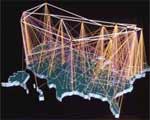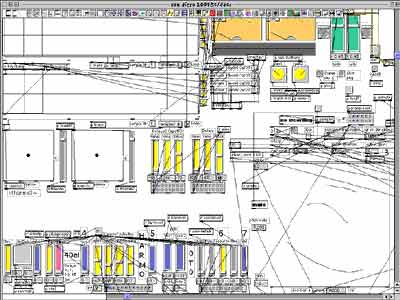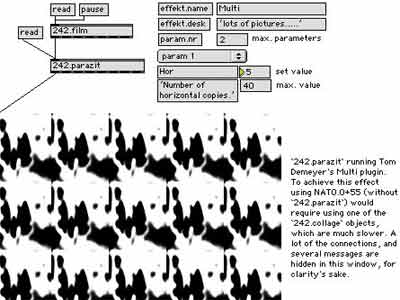| distributed brain | |
 1 'perform or else', p.94 McKenzie, Jon |
'At the turn of the 21st century, the citationality of discourses and practices is passing across an electronic threshold, a digital limen. Words and gestures, statements and behaviors, symbolic systems and living bodies are being recorded, archived and recombined through multimedia communication networks. Liminal and liminoid genres are becoming cyberspatial, flighty, liminautic.'1 |
| 2 in 'schnittstelle', p.127 esposito, Elena  3 in 'Digital Dialectic', p.69 Hayles, Katherine |
'The computer does influence communication, but neither it communicates nor is it producing significations.'2 So why to speak of a shift of significance? 'Because codes can be sent over fiber optics essentially instantaneously, there is no longer a shared, stable context that helps to anchor meaning and guide interpretation.' We had been looking on this before, is it really that important? 'There are only the flickering signfiers, whose transient patterns evoke and embody what G.W.S. Trow has called the context of no context, the suspicion that all contexts, like all texts, are electronically mediated constructions.'5 So earlier it had been stated, that commonly the informant is suspected of manipulation, what does it mean then. |
 |
Seemingly two
things intervened simultaneously leading to a loss of belief in visual
perception, which comes together with a mingeling of clear differentiation
of the position of text and image. Thus ambivalence always comes with this, equally evolving from the status of the image as well as from the new visuality as mentioned. |
 |
A further factor is that what can be seen today is not defined by
a visibility for the eye, but for the machine. Probably we are still
in the ambigious situation of admirring and neglecting machines at
the same time and not accepting that they are a kind of embodiment,
eventhough we entirely make use of them and try to build them like
us (fields like artificial intelligence have close connections to
studies of neural networks and so on). Though the mind (and so perception) is distributed in the artifacts, which themselves are active in the process of shaping both the realities of culture and identity . As the influence of information technologies alters the relation of the signified to signifier this concernes our whole system of distributed perception. |
  |
|
| To live in
an unstable environment of signs leads, as K.Hayles says, to the implication
of flickering signifiers . Exactly this is also a chance for new points
of view, which are obviously needed. Instead of reinstalling old concepts, different ways of depiction have to be thought about. In this sense I like the ironic view of B.Lockemann , who in newer photographical works is showing the 'invisible through the non-visible'. As this corresponds to inherent characteristics of information and media technologies the dealing with the delegation of perception demands a very careful questioning of the visible and the invisible and obviously for new categories of the immaterial. |
|
 
|
more for distributed minds: (nothing especially on images, but delegating and connecting ...) Netztheorie und Netzkultur (info in german) ... go for mailing lists like: german: with further links to the.thing worldwide nettime (on new media) worldwide inymedia (all over) slightly theortical issues: powers of 10 nybble engine project new and mixing images: public netart a discussion of NATO.0+55+3d modular Harvestworks Digital Media Arts Center |